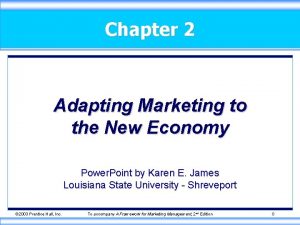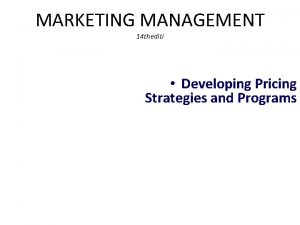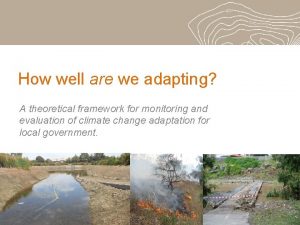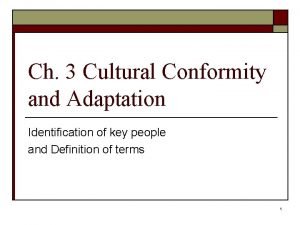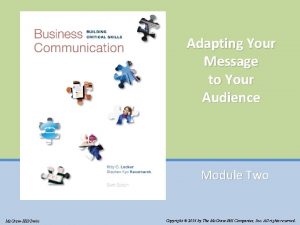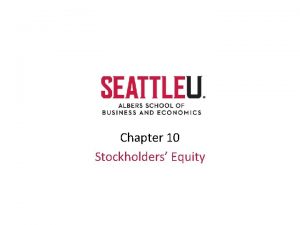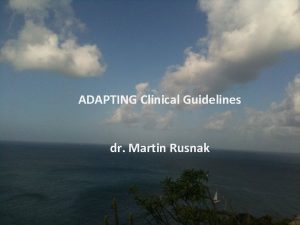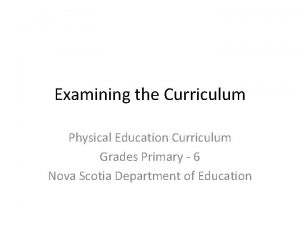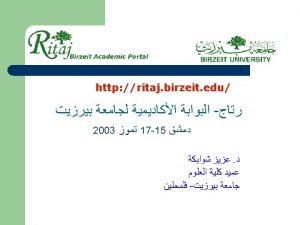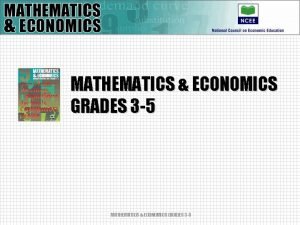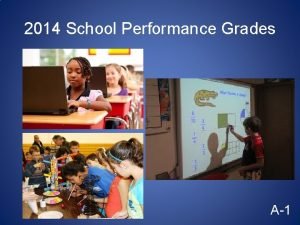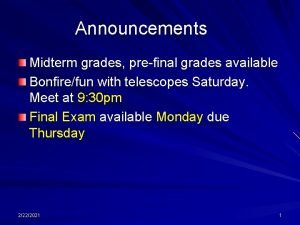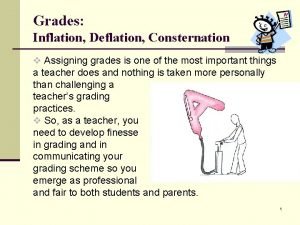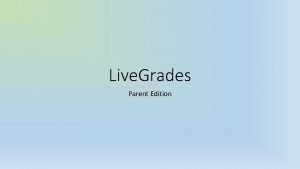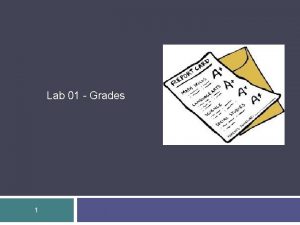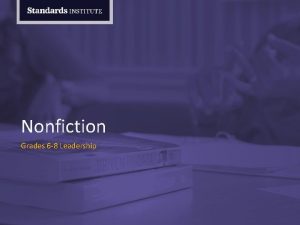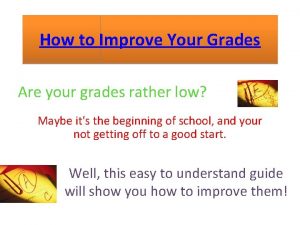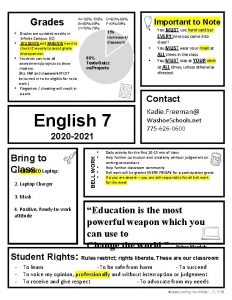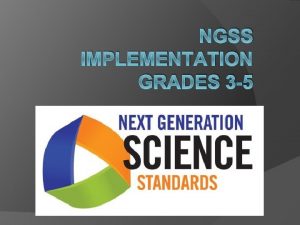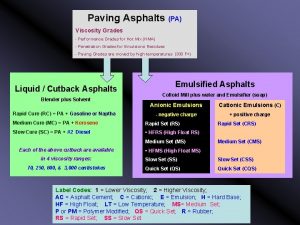Adapting Curriculum for Equity Grades K 5 Summer








































![ADAPTING CURRICULUM FOR EQUITY Adapting Assessment Approach [TOOL] + [TIME] Prerequisite Skills Curricular Intervention ADAPTING CURRICULUM FOR EQUITY Adapting Assessment Approach [TOOL] + [TIME] Prerequisite Skills Curricular Intervention](https://slidetodoc.com/presentation_image_h/b2c5c43084fc21bd7b6d06b20c6af5fe/image-41.jpg)






- Slides: 47

Adapting Curriculum for Equity Grades K– 5 Summer 2018

ADAPTING CURRICULUM FOR EQUITY The Week at a Glance Day Monday 8: 30– 4: 30 Tuesday 8: 30– 4: 30 Wednesday 8: 30– 4: 30 Thursday 8: 3– 4: 30 Friday 8: 30– 2: 30 Ideas Focus on Language, Equity, and Learners Standards Aligned Writing to Build Knowledge, Language, and Vocabulary Adapting Curriculum for Equity The Intersection of Quality Math Tasks and Instruction Systems Thinking for Leaders Who Want Different Results

ADAPTING CURRICULUM FOR EQUITY Feedback on Feedback Plus Delta 3

ADAPTING CURRICULUM FOR EQUITY Objectives and Agenda Objectives Agenda Participants will be able to I. Framing the Challenge • use an English learners language development framework to provide access to the mathematics curriculum for ALL students. II. Mathematical Language Routines • facilitate a curriculum adaptation planning method that intentionally addresses gaps in students’ learning. III. Connecting to Prior Learning: The Shifts and Standards IV. Modeling Planning for Gaps V. Practice Planning for Gaps IV. Expand on Planning with Progressions 4

ADAPTING CURRICULUM FOR EQUITY Norms That Support Our Learning • Take responsibility for yourself as a learner. • Honor timeframes (start, end, activity). • Be an active and hands-on learner. • Use technology to enhance learning. • Strive for equity of voice. • Contribute to a learning environment in which it is “safe to not know. ” • Identify and reframe deficit thinking and speaking. 5

ADAPTING CURRICULUM FOR EQUITY Share Your Learning Don’t forget to jot down ideas for • light bulb moments. • why I teach/lead. 9

ADAPTING CURRICULUM FOR EQUITY Access for English Learners Is Access for ALL “Communicating is essential to the learning of mathematics. . [F]rom the perspective of mathematics learning, by articulating the principles, concepts and rationale behind the steps of a particular problem solution, students have the opportunity to reinforce and deepen their understanding of higher-level knowledge structures in mathematics content” Ryve, 2004; Huang, Normandia & Greer, 2005, p. 45 What words or phrases are examples of equitable instructional practices? Which equity principles do they reflect? Are they fully evident in your math classrooms? If not, why not? 10

Language development and cognitive development are interrelated and mutually dependent. (Walqui & Heritage, 2012) 11

Guiding Principles Students need well-structured opportunities to practice language to learn it. Amplify, do not simplify, language. Content and language develop inseparably and in integrated ways; language development occurs over time and in a nonlinear manner. Scaffold students toward independence with complex tasks; do not scaffold by simplifying text language and task complexity. We are the gatekeepers of language in the classroom as teachers and leaders. All students benefit from a systematic and comprehensive focus on language acquisition that helps them attain the masterful use of standard English in speaking and writing. All students bring valuable knowledge and culture to the classroom. 12

ADAPTING CURRICULUM FOR EQUITY Understanding Language SCALE Support Sense Making Optimize Output Four Design Principles Cultivate Conversation Maximize Linguistic and Cognitive Meta. Awareness 13

ADAPTING CURRICULUM FOR EQUITY Understanding Language SCALE As a group, create a poster that • names the Principle, and • answers the questions: Ø What is the big idea of this Principle? Ø How does it support student linguistic and/or cognitive development? Ø How does this Principle support equity? 1) 2) 3) 4) Support Sense-Making – page 6 Optimize Output – page 6 -7 Cultivate Conversation – page 7 -8 Maximize Meta-Awareness – page 8 14

ADAPTING CURRICULUM FOR EQUITY Mathematical Language Routines MLR 1 – Stronger and Clearer Each Time MLR 2 – Collect and Display MLR 3 – Critique, Correct, and Clarify MLR 4 – Information Gap MLR 5 – Co-Craft Questions and Problems MLR 6 – Three Reads MLR 7 – Compare and Connect MLR 8 – Discussion Supports 15

Sampling the MLRs Which one of these sequences seems different from the others? 0, 1. 5, 3, 4. 5, 6, 7. 5 6, 12, 24, 48, 96, 192 9, 12, 15, 18, 21, 24 10, 15, 20, 25, 30, 35 16

ADAPTING CURRICULUM FOR EQUITY Sampling the MLRs Write a story problem that can be solved by finding 5 × 4. Draw two different diagrams that show 5 × 4 = 20. Explain how your diagrams represent 5 × 4 = 20. Which of the diagrams you used to represent 5 × 4 = 20 can be used to represent 5 × 2/3? Draw the diagram if possible. 17

ADAPTING CURRICULUM FOR EQUITY Sampling the MLRs Alysha really wants to ride her favorite ride at the amusement park one more time before her parents pick her up at 2: 30 pm. There is a very long line at this ride, which Alysha joins at 1: 50 pm (point A in the diagram below). Alysha is nervously checking the time as she is moving forward in the line. By 2: 03 she has made it to point B in line. What is your best estimate for how long it will take Alysha to reach the front of the line? If the ride lasts 3 minutes, can she ride one more time before her parents arrive? 18

Access for English learners is access for ALL. 19

ADAPTING CURRICULUM FOR EQUITY Three Corners Activator Choose the corner with the shift that most resonates with you. • Set context for your choice. • What is your role in mathematics education? • Why does this shift resonate with you? • Discuss the shift as a group, and chart answers to the questions: If you were teaching others about this shift, what points would you make? What does this shift mean with regard to the Standards? • Have a scribe write a definition. • In 1 minute, one person will teach the shift and what it means with regard to the Standards to the rest of the room. 20

Focus, Coherence, and Rigor 29 29

Take a break. . . 30

ADAPTING CURRICULUM FOR EQUITY Planning for Gaps: Coherent Content in Context Equity is engaging in practices that meet students where they are and advances their learning by giving them what they need. It’s about fairness, not sameness. Standards-Aligned Intervention » Identify the major work for the grade. » Identify key prerequisite standard. » Design curricular intervention. » Design performance task to assess prerequisite standard. 31

ADAPTING CURRICULUM FOR EQUITY Modeling Planning for Gaps: The Problem Lesson Objective: Use the area model and multiplication to show the equivalence of two fractions. (4. NF. 1) To help us better understand the objective, let’s look at how this exit ticket informs the expectations of 4. NF. 1. Draw two different area models to represent one fourth by shading. Now, in the first model, decompose the shape into eighths and decompose the second into twelfths. Use multiplication to show each fraction is equivalent to one fourth and how that looks in your shapes. 32

ADAPTING CURRICULUM FOR EQUITY Modeling Planning for Gaps: The Problem • Turn and Talk: What are some of the prerequisite standards students need to be successful on the opening problem? How did you track them down? • Discuss in your group; table leaders will share out big ideas. 33

ADAPTING CURRICULUM FOR EQUITY What Are the Prerequisites for 4. NF. 1? 3. NF. A. 3 (A–D) Explain equivalence of fractions in special cases, and compare fractions by reasoning about their size: 3. NF. A. 1 Understand a fraction 1/b as the quantity formed by 1 part when a whole is partitioned into b equal parts; understand a fraction a/b as the quantity formed by a parts of size 1/b. 3. NF. A. 2 Understand a fraction as a number on the number line; represent fractions on a number line diagram. 4. OA. 2 Multiply or divide to solve word problems involving multiplicative comparison. 34

ADAPTING CURRICULUM FOR EQUITY Curricular Interventions Using Coherent Content in Context • Coherent in the progression of grade -level learning • Focused on current grade level content • Relatively quick 35

ADAPTING CURRICULUM FOR EQUITY Modeling Planning for Gaps: Curricular Interventions Using 3 Cs Turn and Talk: • • Do you like this plan, why? Is this always the best approach to this kind of problem? What are other options and what are benefits and risks to doing them? What other types of interventions you could plan for? 4 4 4 36

Modeling Planning for Gaps: Curricular Interventions Using Coherent Content in Context 39

ADAPTING CURRICULUM FOR EQUITY Modeling Planning for Gaps: Using the Content Guides 40

ADAPTING CURRICULUM FOR EQUITY Modeling Planning for Gaps: Using the Content Guides Skim Part III to get a feel for it. How is it structured? At Your Table: • Divide up the progressions in your guide and create a poster for each progression. We’ll use these as anchor charts. • When you’re done, take a few minutes to explain the progressions to your table mates. 41

ADAPTING CURRICULUM FOR EQUITY Modeling Planning for Gaps: Mapping It All Out How can we plan for this in a focused manner? Assessment Approach Prerequisite Skills Curricular Intervention [TOOL] + [TIME] [STANDARDS] / [KNOWLEDGE] / [SKILLS] [TYPE] + [RESOURCE] 3. NF. A. 3. A: Not able to Give G 3 M 5 L 21 exit slip at identify equivalent end of class Friday before fractions using visual M 5 L 1 fraction models and number lines. ? Teach 2 full lessons on equivalent fractions on the number line using Engage. NY G 3 M 5 L 22 -23 ? 42

ADAPTING CURRICULUM FOR EQUITY Reflection 1. What are your takeaways from this session? 2. How do the content guides affect your practice as a leader or a coach in planning for students with unfinished learning? In particular, consider the role the progressions play in intervention planning. 3. How is this kind of planning for students with unfinished learning an equity move? 4. What further questions do you have? What further resources do you want? 43

ADAPTING CURRICULUM FOR EQUITY Thumb Rating: Are we on track? Objectives Participants will be able to • use an English learners language development framework to provide access to the mathematics curriculum for ALL students. • facilitate a curriculum adaptation planning method that intentionally addresses gaps in students’ learning. 44

Lunch Break!

Welcome Back! 46

ADAPTING CURRICULUM FOR EQUITY Objectives and Agenda Objectives Agenda Participants will be able to I. Framing the Challenge II. Mathematical Language Routines III. Connecting to Prior Learning: The Shifts and Standards IV. Modeling Planning for Gaps V. Practice Planning for Gaps VI. Expand on Planning with Progressions • use an English learners language development framework to provide access to the mathematics curriculum for ALL students. • facilitate a curriculum adaptation planning method that intentionally addresses gaps in students’ learning. 47

ADAPTING CURRICULUM FOR EQUITY Practice Planning for Gaps Mystery Column Prerequisite Skills Curricular Intervention ? ? For the following, fill out the prerequisite skills and curricular intervention columns with two rows for your grade level. Be prepared to share with the room! Grade 3: 3. OA. 3 Grade 4: 4. OA. 2 Grade 5: 5. NBT. 6 48

Break

Completing the Puzzle. . . 50

ADAPTING CURRICULUM FOR EQUITY Expanding on Planning with Progressions: A Change in Practice? 1. Choose a lesson from your unit and note the expectations of the focus standard(s). 2. Use the Content Guides, Coherence Map, or other resources to determine prerequisite skill(s). 3. Determine your curricular interventions. 4. Determine what approach(es) you will take to determine whether or not students have those skill(s). Consider the tool and the timing. 51

ADAPTING CURRICULUM FOR EQUITY Expanding on Planning with Progressions Let’s talk about how we can plan for this in a focused manner. Assessment Approach Prerequisite Skills Curricular Intervention [TOOL] + [TIME] [STANDARDS] / [KNOWLEDGE] / [SKILLS] [TYPE] + [RESOURCE] 3. NF. 3 – explain equivalent fractions; recognize and Insert two full lessons from generate equivalent (G 3 M 5 Lessons 22 and 23) fractions using multiple representations 52

ADAPTING CURRICULUM FOR EQUITY A Change in Practice? 3. Determine your curricular interventions. Consider type of intervention and the resource. • Standard 3. NF. A. 3 • TYPE: Two Lessons • RESOURCE: Engage NY, Lessons 22 & 23 (Grade 3 - Module 5) 4. Determine what approach(es) you will take to determine whether students have those skill(s). Consider the tool and the timing. a) Exit ticket from ENY aligned to those standards given one week before, to allow for planning. b) Observation during my unit on X previously in the year. c) Add additional problem(s) to the exit ticket from previous week. d) Add additional problem(s) into class work a day or two before. 53
![ADAPTING CURRICULUM FOR EQUITY Adapting Assessment Approach TOOL TIME Prerequisite Skills Curricular Intervention ADAPTING CURRICULUM FOR EQUITY Adapting Assessment Approach [TOOL] + [TIME] Prerequisite Skills Curricular Intervention](https://slidetodoc.com/presentation_image_h/b2c5c43084fc21bd7b6d06b20c6af5fe/image-41.jpg)
ADAPTING CURRICULUM FOR EQUITY Adapting Assessment Approach [TOOL] + [TIME] Prerequisite Skills Curricular Intervention [STANDARDS] / [KNOWLEDGE] / [SKILLS] a) Give G 3 M 5 L 20 exit 3. NF. 3 – Explain ticket at end of class equivalent fractions; Friday before starting recognize and generate Module 4. equivalent fractions using b) Assessment data from multiple representations. previous year? c) Add additional problem(s) into class work a day or two before. ? [TYPE] + [RESOURCE] Teach 2 full lessons on equivalent fractions on the number line using Engage. NY G 3 M 5 L 22 -23. ? 54

ADAPTING CURRICULUM FOR EQUITY Expanding on Planning with Progressions: Practice Lesson Objectives Assessment Approach Based on Content Guide, Prerequisite Skills [STANDARDS] / [KNOWLEDGE] / [SKILLS] [TOOL] + [TIME] … Intervention … Assessment Approach Intervention [TYPE] + [RESOURCE] … 55

ADAPTING CURRICULUM FOR EQUITY Reflection: Gallery Walk & Discussion Discuss: 1. What did you learn from engaging in this planning process? 2. Write down a description of the current state of your organization, school, or district with intentional planning for equity in mathematics. 3. List the necessary next steps to making change based on your role and/or sphere of influence. This is also based on today’s learning. 4. Identify leadership moves that you will make to move this work forward. 56

ADAPTING CURRICULUM FOR EQUITY Thumb Rating: Did we meet our objectives? Objectives Are you now able to • use an English learners language development framework to provide access to the mathematics curriculum for ALL students? • facilitate a curriculum adaptation planning method that intentionally addresses gaps in students’ learning?

Feedback Please fill out the survey located here: www. standardsinstitutes. org • Click “Explore the Agenda” on the top of the page. • Click “Details” on the center of the page. 49

About this Deck • Copyright © 2018 Unbound. Ed Learning, Inc. • This work is licensed under a Creative Commons Attribution Non. Commerical Share. Alike 4. 0 International License. • Unbound. Ed Learning, Inc. is the copyright holder of the images and content, except where otherwise indicated in the slide notes. • More information on Creative Commons’ licenses can be found here: https: //creativecommons. org/licenses/ 49

How You Can Use this Deck The materials that we create, unless otherwise cited in the slide notes, are licensed under the Creative Commons Attribution-Non. Commercial-Share. Alike 4. 0 International license (CC BY-NC-SA 4. 0). This means you may: • Share — copy and redistribute the material in any medium or format • Adapt — remix, transform, and build upon the material As long as you follow the license terms: • Provide Attribution — You must give appropriate credit, provide a link to the license, and indicate if changes were made. You may do so in any reasonable manner, but not in any way that suggests that Unbound. Ed or any third party creator endorses you or your use. • No Commercial Use — You may not use the material for commercial purposes • Share. Alike — If you remix, transform, or build upon the material, you must distribute your contributions under the same license as the original. • Add no additional restrictions — You may not apply legal terms or technological measures that legally restrict others from doing anything the license permits. 49
 Adapting curriculum to bridge equity gaps
Adapting curriculum to bridge equity gaps Adapting the price
Adapting the price How well are we adapting
How well are we adapting Adapting to challenges of the micro environment
Adapting to challenges of the micro environment Audience analysis example
Audience analysis example How to adapt marketing to the new economy
How to adapt marketing to the new economy Adapting the price
Adapting the price How well are we adapting
How well are we adapting Adopting and adapting teaching materials
Adopting and adapting teaching materials The process of adapting borrowed cultural traits.
The process of adapting borrowed cultural traits. Paiboc model
Paiboc model Vilken grundregel finns det för tronföljden i sverige?
Vilken grundregel finns det för tronföljden i sverige? Big brother rösta
Big brother rösta Verktyg för automatisering av utbetalningar
Verktyg för automatisering av utbetalningar Omprov cellprov
Omprov cellprov Lyckans minut erik lindorm analys
Lyckans minut erik lindorm analys Vem räknas som jude
Vem räknas som jude Ro i rom pax
Ro i rom pax Boverket ka
Boverket ka Typiska novell drag
Typiska novell drag Shingelfrisyren
Shingelfrisyren Vad är verksamhetsanalys
Vad är verksamhetsanalys Tack för att ni har lyssnat
Tack för att ni har lyssnat Matematisk modellering eksempel
Matematisk modellering eksempel Shivaiter
Shivaiter Centrum för kunskap och säkerhet
Centrum för kunskap och säkerhet Läkarutlåtande för livränta
Läkarutlåtande för livränta Påbyggnader för flakfordon
Påbyggnader för flakfordon Inköpsprocessen steg för steg
Inköpsprocessen steg för steg Sura för anatom
Sura för anatom Egg för emanuel
Egg för emanuel Strategi för svensk viltförvaltning
Strategi för svensk viltförvaltning Fr formel
Fr formel Rutin för avvikelsehantering
Rutin för avvikelsehantering Klassificeringsstruktur för kommunala verksamheter
Klassificeringsstruktur för kommunala verksamheter Myndigheten för delaktighet
Myndigheten för delaktighet Tack för att ni lyssnade
Tack för att ni lyssnade Debatt artikel mall
Debatt artikel mall Tobinskatten för och nackdelar
Tobinskatten för och nackdelar Nationell inriktning för artificiell intelligens
Nationell inriktning för artificiell intelligens En lathund för arbete med kontinuitetshantering
En lathund för arbete med kontinuitetshantering Atmosfr
Atmosfr Vad är referatmarkeringar
Vad är referatmarkeringar Vanlig celldelning
Vanlig celldelning Byggprocessen steg för steg
Byggprocessen steg för steg Kraft per area
Kraft per area Presentera för publik crossboss
Presentera för publik crossboss Rbk mätning
Rbk mätning





